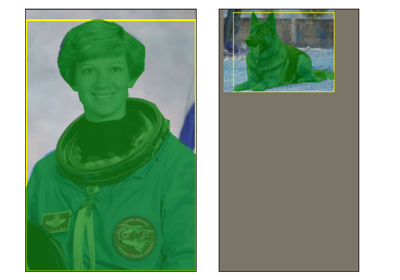RandomZoomOut¶
- class torchvision.transforms.v2.RandomZoomOut(fill: Union[int, float, Sequence[int], Sequence[float], None, dict[Union[type, str], Union[int, float, collections.abc.Sequence[int], collections.abc.Sequence[float], NoneType]]] = 0, side_range: Sequence[float] = (1.0, 4.0), p: float = 0.5)[source]¶
“Zoom out” transformation from “SSD: Single Shot MultiBox Detector”.
This transformation randomly pads images, videos, bounding boxes and masks creating a zoom out effect. Output spatial size is randomly sampled from original size up to a maximum size configured with
side_rangeparameter:r = uniform_sample(side_range[0], side_range[1]) output_width = input_width * r output_height = input_height * r
If the input is a
torch.Tensoror aTVTensor(e.g.Image,Video,BoundingBoxesetc.) it can have arbitrary number of leading batch dimensions. For example, the image can have[..., C, H, W]shape. A bounding box can have[..., 4]shape.- Parameters:
fill (number or tuple or dict, optional) – Pixel fill value used when the
padding_modeis constant. Default is 0. If a tuple of length 3, it is used to fill R, G, B channels respectively. Fill value can be also a dictionary mapping data type to the fill value, e.g.fill={tv_tensors.Image: 127, tv_tensors.Mask: 0}whereImagewill be filled with 127 andMaskwill be filled with 0.side_range (sequence of python:floats, optional) – tuple of two floats defines minimum and maximum factors to scale the input size.
p (float, optional) – probability that the zoom operation will be performed.
Examples using
RandomZoomOut:
Transforms v2: End-to-end object detection/segmentation example
Transforms v2: End-to-end object detection/segmentation example
